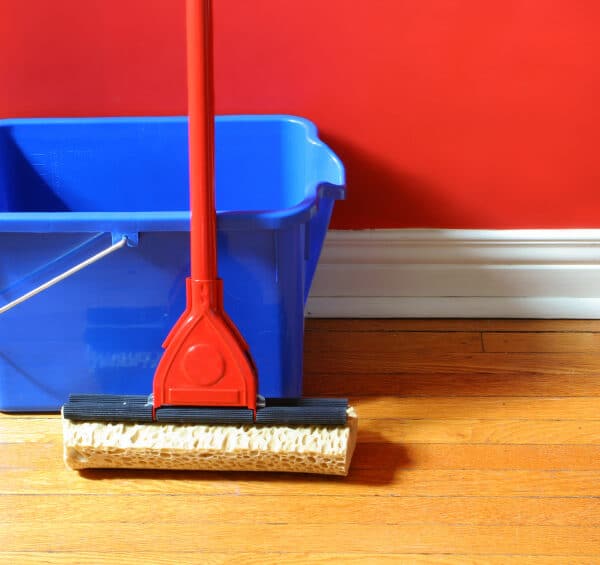
Consider the following when designing the interior of a room:
- Room function – what is the room going to be used for?
- Is there enough space for its function?
- Location of fixtures and fittings such as radiators, washbasins
- Adequate number of electric points
- Suitable and sufficient plumbing to the room
- Durability of the surfaces
- Ease of cleaning of surfaces
- Ventilation with good airflow
- Natural ventilation
Flooring in the building
Flooring should be level and safe. Depending on the function of the room the covering may benefit from a water resistant, non-slip and easily cleaned covering. Carpets are difficult to keep clean and harbour a number of microorganisms, mould spores, allergens, fungal species growth, dust and dirt; they are reservoirs for bacteria or viruses. Norovirus, Salmonella, and Campylobacter can all be found on carpets. Norovirus can survive on carpet fibres for four to six weeks, and can become airborne each time someone walks on the carpet. Salmonella can be tracked onto carpets by shoes. Flooring that can be cleaned with disinfectant is the better choice for supporting the reduction and management of microscopic pathogens, dust, moulds, allergens and pests.
The easy cleaning of floors needs to be facilitated by straight edging and smooth surfaces around the circumference of the room floor. Coved skirting will enable effective cleaning and reduce dust contamination of ledges.
The purpose of the room
When deciding on the type of floor to use, remember to review the needs of the room:
- Is the room used for different purposes in different areas, such as consultation in one area and procedures in another?
- Is there a risk of spillages occurring, such as drinks and body fluids?
- Is it a bedroom or living room where comfort is important?
Windows
The location and use of windows needs consideration in the design stage. A source of natural light is important and better than artificial light. Windows should be able to be easily cleaned both inside and outside. To prevent falls from windows restricted opening locks must be fitted. There have been a number of incidents where a person has fallen from a window at height, resulting in death.
Walls
Walls cover a large surface area and condensation and mould growth can potentially be issues. Wallpaper should not be the first choice for walls. On permeable surfaces such as wallpaper condensation is absorbed into the wall paper material and mould can grow underneath it in pockets; the mould is not always initially obvious. A paint finish is easier to clean. It is less likely that moulds, dust and dirt will accumulate unnoticed on a surface that is easy to clean.
Ventilation systems
Good natural ventilation will prevent the build-up of moulds and microbes. Integrated air conditioning units need to be placed in a suitable position to facilitate cleaning. All sections of pipe work should be encased to allow and facilitate cleaning, as dirt, grime and dust can accumulate.
Heating
The type and position of radiators need to be considered. If a radiator is located in a care home where elderly residents are sleeping, then temperature control is required. Placing radiators near to beds is not recommended as this can potentially result in residents getting burn injuries whilst asleep.
In the next blog I will review the furnishings that need to be considered in a room and the related infection control management. QCS has policies on infection control to meet your CQC requirements.
References
Infection control in the built environment (HBN 00-09)



